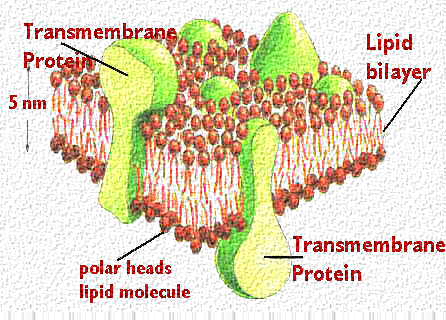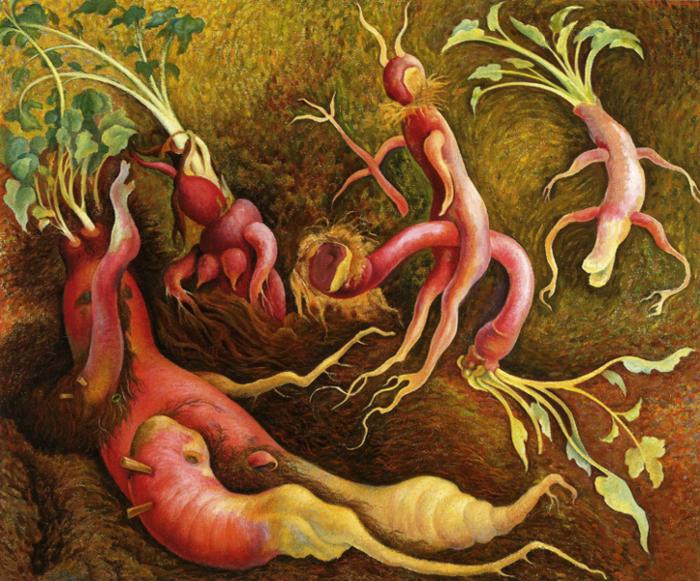
Τα λιπίδια του αιμάτος και η διατροφή
"Ιωάννης Χατζημηνάς"
Δευτέρα, 20 Αυγούστου 2001
Στην όχι και τόσο μακρινή εκείνη εποχή, προς το τέλος της δεκαετίας του 1920, τα καλοκαίρια, κάθε Πέμπτη βράδυ, γύρω στις 9 με 11 μμ, τα «καραβάνια» με τις γκαμήλες περνούσαν, νωχελικά, λικνιστικά, ήρεμα και αθόρυβα μέσα στη νύχτα, από το δρόμο που ήταν μπροστά στο σπίτι μας στην Κερύνεια. Οι γκαμήλες, αυτά τα «πλοία της ερήμου,» διάβαιναν φορτωμένες με τα κηπευτικά, τα πορτοκάλια, τα μανταρίνια, τα λεμόνια, τις πατάτες,
το κολοκάσι, τα λαχανικά, τα καρπούζια και τα πεπόνια, τα αμύγδαλα και τα καρύδια και με όλη την ποικιλώνυμη σοδιά της καταπράσινης περιοχής του Καραβά και της Λαπήθου. Αλλά δεν ήταν μονάχα οι γκαμήλες.
Κάθε τόσο έκανε την εμφάνισή του και κάποιο κάρο, που το σέρναν ένα ή δυο μουλάρια μαζί, να αργοκυλάει στην αμαξωτή σκυρόστρωτη στράτα, με τις δυο τεράστιες ρόδες του, με τη σιδερένια στεφάνη και τα ξύλινα «αδράχτια» τους, να περιστρέφονται αργά και να τρίζουν μέσα στη νύχτα, πάνω στον αλάδωτο άξονα και τα σκύρα του δρόμου.
Έτσι, όπως η «λάμπα θυέλλης» κρεμότανε από το μέσο του άξονα, και κουνιότανε πέρα-δώθε, ανάμεσα στις θεόρατες ρόδες, οι σκιές από τις ξύλινες αχτίνες των τροχών προβάλλονταν πάνω στην επιφάνεια της στράτας, στους θάμνους, στις καλαμιές στους φράκτες, στα δέντρα, και στους τοίχους των σπιτιών που βρίσκονταν στα πλάγια του δρόμου, κι έμοιαζαν σαν γιγαντιαίοι διασκελισμοί ενός πανύψηλου κολοσσού, που συνόδευε όλη αυτή την πομπή μέσα στη νύχτα. Όπως και οι γκαμήλες, έτσι και τα κάρα ήταν φορτωμένα με τη σοδιά από τα «φθαρτά είδη,» που μεταφέρονταν κάθε Πέμπτη βράδυ από τους τόπους παραγωγής προς την πρωτεύουσα, τη Χώρα, για το βδομαδιάτικο παζάρι, ένα είδος λαϊκής αγοράς, που γινόταν κάθε Παρασκευή
Αυτή είναι, σε αδρές γραμμές, η εικόνα που ζωντανεύει στη συνείδησή μου κάθε φορά που καταπιάνομαι με την έννοια και τη διεργασία της
μεταφοράς θρεπτικών ουσιών και άλλων στοιχείων μέσα από τις αρτηρίες, τα τριχοειδή και τις φλέβες του κυκλοφορικού συστήματος από το έντερο είτε και τις διάφορες «αποθήκες αποθεμάτων,» προς τα κύτταρα των ιστών του σώματος! Αλλά και αντίστροφα: κάθε φορά που συναντώ στον αυτοκινητόδρομο τις τεράστιες νταλίκες και τα γιγαντιαία φορτηγά αυτοκίνητα, το ένα μετά το άλλο, φορτωμένα με τη γεωργική παραγωγή, να οδεύουν μέσα στη νύχτα από την επαρχία προς την αχόρταγη πρωτεύουσα, στο μυαλό μου ξυπνάει η εικόνα της αέναης διακίνησης των θρεπτικών ουσιών του σώματος, με το αίμα που ρέει ακατάπαυστα μέσα στο αφάνταστα πολύπλοκο οδικό μας, αγγειακό ήθελα να πω, σύστημα!
Από κάποια συγγενή, αθεράπευτη διαστροφή της φαντασίας, αυτόματα, οι νταλίκες και τα φορτηγά , τα κάρα και οι γκαμήλες, όλα φορτωμένα με τα τρόφιμα που μεταφέρονται στην κατανάλωση, μεταμορφώνονται σε «χυλομικρά,» σε
λιποπρωτεϊνες με την κακιά και την καλή χοληστερόλη, σε «
ελεύθερα λιπαρά οξέα,» πιασμένα χέρι- χέρι με τις λευκωματίνες του πλάσματος του αίματος, με άλλα λόγια σε όλες τις μορφές και τις κατηγορίες
των λιπιδίων του αίματος. Όλα αυτά τα λιπίδια αποτελούν, κατά κάποιο τρόπο, το σημαντικότερο είδος τροφής, με την οποία πραγματοποιείται η ενεργειοδότηση των εκατό περίπου τρισεκατομμυρίων κυττάρων που αποτελούν το σώμα μας. Και βέβαια βρίσκονται μέσα στο αίμα είτε για τη μεταφορά τους από το έντερο προς το συκώτι και προς τις λιπαποθήκες για αποθήκευση, είτε για τη μεταφορά τους από τις λιπαποθήκες και το συκώτι προς όλα τα σημεία του σώματος για κατανάλωση από τα κύτταρα.

Βέβαια το ποσό και το είδος των λιπιδίων που βρίσκονται στο αίμα ποικίλλουν, και μάλιστα σε σημαντικό βαθμό, ανάλογα με την κατάσταση στην οποία βρίσκεται το σώμα στις διάφορες περιπτώσεις. Έτσι, άλλα είναι τα είδη και το ποσό των λιπιδίων που κυκλοφορούνται στο αίμα τρεις ως τέσσερις ώρες μετά από γεύμα που περιείχε
λιπαρά, και άλλα τα είδη και διαφορετικά τα ποσά που βρίσκονται στο αίμα όταν το άτομο είναι νηστικό. Επίσης, διαφορετικά είναι τα λιπίδια του αίματος, τόσο κατά το είδος όσο και κατά το ποσό, όταν το άτομο βρίσκεται σε κατάσταση ηρεμίας είτε όταν κοιμάται, από εκείνα που κυκλοφορούνται στο αίμα όταν χρησιμοποιεί τους μυς του, όπως όταν περπατάει, τρέχει, ανεβαίνει σκάλες, κολυμπάει, τρέχει με ποδήλατο ή παίζει τένις. Ακόμα το είδος και το ποσό των λιπιδίων στο αίμα μεταβάλλονται ανάλογα με τη ψυχική διάθεση του ατόμου, το είδος και την ένταση των συναισθημάτων, των επιθυμιών και των προσδοκιών του.
Αλλά με τους παράγοντες που επηρεάζουν το είδος και το ποσό των λιπιδίων του αίματος
δεν τελειώσαμε ακόμα. Πράγματι, σημαντική επίδραση εξασκείται από το συνολικό ποσό του λίπους που βρίσκεται συσσωρευμένο στο σώμα, δηλαδή από το βαθμό της παχυσαρκίας του ατόμου, από το είδος της τροφής και τη συνολική της περιεκτικότητα σε θερμίδες, αλλά και από το βασικό γενετικό υπόστρωμα του ατόμου, δηλαδή από το κληρονομούμενο γενετικό υλικό ( γενώμη, DNA).
Τα τελευταία χρόνια γίνεται πολύς λόγος και δίδεται μεγάλη δημοσιότητα σε θέματα που έχουν σχέση με τα λιπίδια του αίματος, μετά από τη διαπίστωση ότι η αύξηση ορισμένων ειδών λιπιδίων στο αίμα συσχετίζεται με σοβαρές νοσηρές καταστάσεις, που, στις περισσότερες περιπτώσεις, καταλήγουν σε βαριά αναπηρία είτε και σε πρόωρο θάνατο. Η σοβαρότερη και η περισσότερο απειλητική για τη ζωή από τις καταστάσεις αυτές είναι η αρτηριοσκλήρωση, η οποία . σύμφωνα με όλες τις ενδείξεις, έχει άμεση σχέση με ένα ιδιαίτερο τύπο υπερλιπιδαιμίας, κατά τον οποίο παρατηρείται υπέρμετρη αύξηση των τριγλυκεριδίων και της χοληστερόλης του αίματος.
Γενικά, τα λιπίδια που κυκλοφορούνται μέσα στο πλάσμα του αίματος βρίσκονται με τις ακόλουθες τρεις μορφές: τα χυλομικρά, τις λιποπρωτείνες και τα ελεύθερα λιπαρά οξέα.
Α.
Τα χυλομικρά. Πρόκειται για σχετικά μεγάλα «σταγονίδια,» ή, καλύτερα «συγκροτήματα» μορίων (μέγεθος 0,1 ως 0,5 μm εκατομμυριοστό του μέτρου), που αποτελούνται κατά μεγάλο ποσοστό από ουδέτερο λίπος, δηλαδή από τριγλυκερίδια, και κατά πολύ μικρότερο ποσοστό από φωσφολιπίδια, και από ακόμα μικρότερο ποσοστό (3 ως 4%)
χοληστερόλη,
μαζί με πολύ μικρό ποσοστό λευκώματος, που αποτελεί και το περικάλυμμα του «σταγονιδίου,» έτσι ώστε να εξασφαλίζεται η σταθερότητά του μέσα στο πλάσμα του αίματος.Τα χυλομικρά αποτελούν τη μορφή με την οποία το μεγαλύτερο μέρος του λίπους της τροφής, μετά από την πέψη και την απορρόφησή του από τα έντερο, μεταφέρεται με το αίμα από το έντερο προς τις λιπαποθήκες του σώματος, για εναπόθεση μέσα στα λιποκύτταρα του λιπώδη ιστού. Ιδιαίτερη σημασία ενέχει το γεγονός ότι τα λιπίδια που περιέχονται στα χυλομικρά φέρονται από το έντερο προς το αίμα με τη λέμφο, χωρίς προηγουμένως να διέρχονται από το συκώτι.
Τα χυλομικρά σχηματίζονται μέσα στα ίδια τα επιθηλιακά κύτταρα των λαχνών του εντέρου, κατά τη διεργασία της απορρόφησης του λίπους της τροφής από το έντερο μετά την πέψη του, και στη συνέχεια αποβάλλονται από αυτά τα κύτταρα προς τα λεμφαγγεία του εντέρου και μεταφέρονται με τη λέμφο προς το αίμα. Φυσιολογικά τα χυλομικρά αυξάνονται μέσα στο πλάσμα του αίματος και μπορούν να φτάνουν και σε ποσοστό μέχρι και 2% κατά τη διάρκεια της απορρόφησης λίπους από το έντερο, λίγες ώρες μετά από γεύμα πλούσιο σε λίπος.
Μολαταύτα, στο φυσιολογικό άτομο, τα χυλομικρά απομακρύνονται γρήγορα από το αίμα γιατί, όταν αυτά περνάνε μέσα από τα τριχοειδή αγγεία που βρίσκονται στο λιπώδη ιστό, υφίστανται την επίδραση ορισμένων ενζύμων που βρίσκονται στο τοίχωμα αυτών των αγγείων, με συνέπεια τη διάσπαση των τριγλυκεριδίων τους σε λιπαρά οξέα και
γλυκερόλη, που παραλαμβάνονται από τα λιποκύτταρα και, σε πολύ μικρότερο βαθμό, από τα ηπατικά κύτταρα, και μετατρέπονται σε τριγλυκερίδια, δηλαδή σε ουδέτερο λίπος μέσα σ αυτά τα κύτταρα. Την ίδια περίπου τύχη έχουν και τα φωσφολιπίδια που περιέχονται στα χυλομικρά.
Β.
Οι λιποπρωτεϊνες. Πρόκειται για υπομικροσκοπικά «συγκροτήματα» μορίων, πολύ μικρότερα από τα χυλομικρά, αλλά που ουσιαστικά αποτελούνται από τα ίδια σχεδόν συστατικά με τα χυλομικρά, υπό διαφορετικές όμως αναλογίες. Τα συστατικά αυτά είναι

τριγλυκερίδια, χοληστερόλη, φωσφολιπίδια και λεύκωμα. Οι περισσότερες λιποπρωτεϊνες παράγονται στο ήπαρ από τριγλυκερίδια, χοληστερόλη φωσφολιπίδια και πρωτεϊνες που συντίθενται από τα ηπατικά κύτταρα, σε μικρότερα δε ποσά και από τα επιθηλιακά κύτταρα των λαχνών του εντέρου, κατά τη διάρκεια της απορρόφησης λιπαρών οξέων από το έντερο.
Ανάλογα με την αναλογία της πρωτεϊνης σε σχέση με τα λιπίδια που περιέχονται στο «συγκρότημα,» οι λιποπρωτεϊνες διακρίνονται σε τέσσερα είδη. Η διάκριση αυτή είναι σημαντική, γιατί τα διάφορα αυτά είδη έχουν και διαφορετικές λειτουργίες, η δε αύξηση είτε η ελάττωσή τους στο αίμα έχει σοβαρές επιπτώσεις στην υγεία μας. Τα πρώτα τρία είδη είναι: (1) Οι λιποπρωτεϊνες πολύ χαμηλής πυκνότητας, (2) οι λιποπρωτεϊνες ενδιάμεσης πυκνότητας, και (3) οι λιποπρωτεϊνες χαμηλής πυκνότητας, που αποτελούν, κατά κάποιο τρόπο ενιαίο σύστημα.
Από τα τρία αυτά είδη, το πρώτο, δηλαδή οι λιποπρωτεϊνες πολύ χαμηλής πυκνότητας, παράγονται αρχικά στο ήπαρ, και περιέχουν πολύ μεγάλο ποσοστό τριγλυκεριδίων και μικρότερο ποσοστό χοληστερόλης και φωσφολιπιδίων, που συντίθενται στα ηπατικά κύτταρα. Κατά την κυκλοφορία αυτών των λιποπρωτεϊνών μέσα στο αίμα, ένα μεγάλο μέρος από τα τριγλυκερίδια που περιέχονται σ αυτά διασπάται από ένζυμα που βρίσκονται στα ενδοθηλιακά κύτταρα των τριχοειδών, κατά κύριο λόγο στο λιπώδη ιστό, αλλά και σε μικρότερο βαθμό, και σε άλλους ιστούς του σώματος.
Η
γλυκερόλη και τα λιπαρά οξέα που προκύπτουν από αυτή τη διάσπαση παραλαμβάνονται από τα κύτταρα του λιπώδη ιστού και αποθηκεύονται ως
τριγλυκερίδια, δηλαδή ως λίπος, είτε και χρησιμοποιούνται από άλλα κύτταρα ως καύσιμα για την απόδοση ενέργειας, το δε υπολειπόμενο κομμάτι της λιποπρωτεϊνης αποτελεί πλέον μια λιποπρωτεϊνη ενδιάμεσης πυκνότητας. Στη συνέχεια, ένα σημαντικό μέρος από αυτές τις λιποπρωτεϊνες παραλαμβάνεται από τα ηπατικά κύτταρα, και με αυτό τον τρόπο αποσύρονται από την κυκλοφορία, ενώ οι υπόλοιπες επανακυκλοφορούνται και χάνουν προοδευτικά όλα σχεδόν τα τριγλυκερίδιά τους, με αποτέλεσμα να περιέχουν πια, εκτός από την πρωτεϊνη τους, μόνο φωσφολιπίδια και χοληστερόλη σε υψηλή συγκέντρωση. Η μορφή αυτή αποτελεί το τρίτο είδος των λιποπρωτεϊνών, δηλαδή τις λιποπρωτεϊνες χαμηλής πυκνότητας. Οι λιποπρωτεϊνες χαμηλής πυκνότητας κυκλοφορούνται στο αίμα και παραλαμβάνονται αυτούσιες, ουσιαστικά από όλα τα κύτταρα του σώματος, όπου και αποδίδουν στο εσωτερικό αυτών των κυττάρων, τη χοληστερόλη και τα φωσφολιπίδιά τους.
Η πρόσληψή τους από τα διάφορα κύτταρα γίνεται ανάλογα με τις ανάγκες αυτών των κυττάρων, και αυτό ρυθμίζεται από τα ίδια τα κύτταρα με την παραγωγή περισσότερων είτε λιγότερων ειδικών υποδοχέων στην κυτταρική τους μεμβράνη. Τελικά, όσες λιποπρωτεϊνες αυτού του είδους περισσεύουν, αποσύρονται από την κυκλοφορία με την πρόσληψή τους από τα ηπατικά κύτταρα.
Σε ορισμένες παθολογικές περιπτώσεις το συκώτι δεν μπορεί να αποσύρει τις λιποπρωτεϊνες ενδιάμεσης και χαμηλής πυκνότητας από την κυκλοφορία γιατί τα κύτταρά του δεν διαθέτουν τους κατάλληλους υποδοχείς. Σ αυτή την περίπτωση, τα ηπατικά κύτταρα υποχρεώνονται να συνθέτουν συνεχώς καινούρια χοληστερόλη και να παράγουν συνεχώς μεγάλα ποσά λιποπρωτεϊνών πολύ χαμηλής πυκνότητας, με αποτέλεσμα την αύξηση των λιποπρωτεϊνών χαμηλής πυκνότητας και, κατά συνέπεια, και της χοληστερόλης του πλάσματος στο τετραπλάσιο ως και το εξαπλάσιο του φυσιολογικού επιπέδου. Η συνέπεια αυτής της αύξησης της χοληστερόλης του πλάσματος είναι η εναπόθεσή της στα τοιχώματα των αρτηριών, με αποτέλεσμα τη δημιουργία αθηρωματικών πλακών, δηλαδή την πρόκληση αρτηριοσκλήρωσης.

Το τέταρτο είδος των λιποπρωτεϊνών του πλάσματος είναι οι λιποπρωτεϊνες υψηλής πυκνότητας, στις οποίες το ποσοστό των πρωτεϊνών στο «σταγονίδιο» φτάνει περίπου στα 50% και, κατά συνέπεια, το ποσοστό των
τριγλυκεριδίων τους είναι ελαττωμένο. Παράγονται και αυτές από τα ηπατικά κύτταρα, αλλά και από τα επιθηλιακά κύτταρα του εντερικού βλεννογόνου κατά τη διάρκεια της απορρόφησης λίπους από το έντερο. Η λειτουργία τους δεν έχει διευκρινισθεί πλήρως, πιστεύεται όμως ότι διαθέτουν την ικανότητα να παραλαμβάνουν κρυστάλλους χοληστερόλης, που έχουν ήδη εναποτεθεί στα τοιχώματα των αρτηριών, και να τους αποδίδουν προς τις λιποπρωτεϊνες ενδιάμεσης και χαμηλής πυκνότητας, με αποτέλεσμα την επιστροφή αυτής της χοληστερόλης προς το ήπαρ.
Δηλαδή, οι λιποπρωτεϊνες αυτού του είδους φαίνεται ότι προστατεύουν τις αρτηρίες μας από την αρτηριοσκλήρωση, και γι αυτό, η χοληστερόλη που περιέχεται σ΄ αυτές χαρακτηρίζεται ως «καλή χοληστερόλη,» ενώ η χοληστερόλη που βρίσκεται ενσωματωμένη στα άλλα τρία είδη των λιποπρωτεϊνών χαρακτηρίζεται ως «η κακή χοληστερόλη.»
Γ.
Τα ελεύθερα λιπαρά οξέα. Η τρίτη μορφή με την οποία βρίσκονται τα λιπίδια μέσα στο πλάσμα του αίματος είναι τα «ελεύθερα λιπαρά οξέα.» Ο όρος είναι παραπλανητικός γιατί τα λιπαρά αυτά οξέα δεν είναι καθόλου «ελεύθερα» μέσα στο πλάσμα, ούτε εξάλλου και θα μπορούσαν να είναι ελεύθερα γιατί, όπως και όλα τα άλλα λιπίδια, και αυτά είναι αδιάλυτα στο νερό. Πράγματι, τα λιπαρά αυτά οξέα βρίσκονται ενωμένα με μόρια λευκωματινών του πλάσματος, αποτελούν δε την κυριότερη μορφή με την οποία στα λιπίδια διακινούνται από τις λιπαποθήκες του σώματος προς όλα τα άλλα κύτταρα για
να χρησιμοποιηθούν ως καύσιμα για την απόδοση ενέργειας.Τα λιπαρά αυτά οξέα προέρχονται από τα
λιποκύτταρα του λιπώδη ιστού, με τη διάσπαση των τριγλυκεριδίων αυτών των κυττάρων, με την επίδραση ειδικού ενζύμου που περιέχεται σ αυτά τα κύτταρα, σε λιπαρά οξέα και γλυκερόλη. Στη συνέχεια, τα λιπαρά οξέα βγαίνουν από τα λιποκύτταρα και ενώνονται με λευκωματίνες μέσα στο πλάσμα του αίματος, με το οποίο μεταφέρονται σε όλους τους ιστούς του σώματος και παραλαμβάνονται από τα διάφορα κύτταρα και, κατά κύριο λόγο, από τις μυϊκές ίνες και το μυοκάρδιο. Το ποσό τους στο αίμα αυξάνεται σε μεγάλο βαθμό όταν το άτομο είναι νηστικό για πολλές ώρες, ιδιαίτερα δε κατά την παρατεταμένη μυϊκή δραστηριότητα. Και στις δυο αυτές περιπτώσεις, και ιδιαίτερα στη δεύτερη περίπτωση, το ποσό τους στο αίμα αυξάνεται γιατί γίνεται κινητοποίηση λιπαρών οξέων για την αντιμετώπιση των αναγκών του σώματος σε ενέργεια.
Από τα παραπάνω θα έγινε φαντάζομαι σαφές ότι το θέμα των λιπιδίων του αίματος είναι αρκετά περίπλοκο, και σε πάρα πολλά σημεία του αδιευκρίνιστο. Είναι προφανές ότι οι διάφορες μορφές των λιπιδίων του αίματος, καθώς και το συνολικό τους ποσό, επηρεάζονται από ένα πλήθος παράγοντες, και ιδιαίτερα από τη λειτουργία, την παρουσία είτε και την απουσία ολόκληρης αρμάδας από ένζυμα που βρίσκονται μέσα στα λιποκύτταρα, στα ηπατοκύτταρα, καθώς και σε διάφορα άλλα κύτταρα του σώματος.. Επιπρόσθετα, η λειτουργία αυτών των ενζύμων επηρεάζεται από διάφορες ορμόνες, όπως είναι η ινσουλίνη, η αδρεναλίνη, τα γλυκοκορτικοειδή των επινεφριδίων, η αυξητική ορμόνη της υπόφυσης, οι γεννητικές ορμόνες, κλπ. Όλοι αυτοί οι παράγοντες είναι, στο μεγαλύτερο μέρος τους ανεξέλεγκτοι και ακολουθούν το δρόμο τους και επιτελούν το ρόλο τους όπως ακριβώς αυτός καθορίζεται από τα γονίδια στο κάθε άτομο, χωρίς να υπάρχει η δυνατότητα (επί του παρόντος) για αποτελεσματική μας παρέμβαση.
Μολαταύτα, ανάμεσα στους παράγοντες που επηρεάζουν τη συνολική εικόνα, καθώς και τα επί μέρους τμήματα αυτής της εικόνας των λιπιδίων του αίματος είναι και το είδος και το ποσό της καθημερινής μας τροφής. Εκείνο που βασικά μας ενδιαφέρει είναι η διατήρηση των λιποπρωτεϊνών χαμηλής πυκνότητας, δηλαδή εκείνων που περιέχουν την «κακή» χοληστερόλη, σε όσο το δυνατό χαμηλότερα επίπεδα, καθώς και η διατήρηση των λιποπρωτεϊνών υψηλής πυκνότητας, δηλαδή εκείνων που περιέχουν την «καλή» χοληστερόλη, σε σχετικά υψηλό επίπεδο. Μόνο με αυτό τον τρόπο παρέχεται μια σχετική εξασφάλιση από την πρώιμη ανάπτυξη αρτηριοσκλήρωσης,
με όλα τα δυσμενή συνακόλουθα.
Από πολλές πειραματικές και άλλες μελέτες, που έχουν γίνει, τόσο σε πειραματόζωα όσο και στον άνθρωπο, προκύπτουν ορισμένες βασικές αρχές όσον αφορά την επίδραση της διατροφής στα λιπίδια του αίματος, και ιδιαίτερα στην «κακή» χοληστερόλη του αίματος:

1. Η αύξηση είτε η ελάττωση της χοληστερόλης που περιέχεται στη τροφή επηρεάζει, αλλά όχι σε σημαντικό βαθμό, την περιεκτικότητα του αίματος σε χοληστερόλη. Πράγματι, η αύξηση είτε η ελάττωση της χοληστερόλης με αυτό τον τρόπο δεν μπορεί να υπερβαίνει ένα ποσοστό, το πολύ 15%. Αυτό συμβαίνει γιατί, και αν ακόμα η πρόσληψη της χοληστερόλης με την τροφή είναι μηδενική,
το ήπαρ και το εντερικό επιθήλιο συνθέτουν αρκετή χοληστερόλη για να διατηρήσουν το επίπεδό της στο ύψος που καθορίζεται από ένα σωρό άλλους ανεξέλεγκτους παράγοντες.
2.Η πρόσληψη με την τροφή λίπους που περιέχει σε μεγάλη αναλογία
κορεσμένα λιπαρά οξέα, όπως είναι το βούτυρο του γάλακτος και το λίπος των τυριών και, σε μικρότερο βαθμό, γενικά το ζωικό λίπος, συνεπάγεται αύξηση της χοληστερόλης του αίματος μέχρι και κατά 25%. Συνεπώς καλό είναι αυτά τα λίπη να αποφεύγονται όσο το δυνατό περισσότερο.
3.Με τη πρόσληψη λίπους με μεγάλη αναλογία σε
πολυακόρεστα λιπαρά οξέα, όπως είναι το ελαιόλαδο και τα διάφορα σπορέλαια και ορισμένα ιχθυέλαια, επιτυγχάνεται ελαφρά ως μέτρια μείωση της «κακής» χοληστερόλης του αίματος.
4. Το οινόπνευμα αυξάνει τη χοληστερόλη του αίματος.
5. Η πρόσληψη με την τροφή σημαντικής ποσότητας αδιάλυτων και διαλυτών φυτικών ινών μειώνει τη χοληστερόλη του αίματος. Οι φυτικές αυτές ίνες περιέχονται στα χόρτα, στις σαλάτες, στα φρούτα και σε όλα τα προϊόντα που παρασκευάζονται από άλευρα ολικής άλεσης, δηλαδή άλευρα που χρησιμοποιούνται αυτούσια όπως βγαίνουν από το μύλο, με όλο τους το πίτουρο.
6.Η διατήρηση του βάρους του σώματος στο φυσιολογικό επίπεδο αποτελεί παράγοντα ευεργετικό όσον αφορά τα λιπίδια του αίματος. Απεναντίας, η παχυσαρκία επιδεινώνει την υπερλιπιδαιμία.
7. Οι θερμίδες του διαιτολογίου που προέρχονται από λίπη και έλαια δεν πρέπει να υπερβαίνουν τα 30% του ολικού ποσού των θερμίδων της διατροφής, καλό δε είναι να διατηρούνται ακόμα και κάτω από τα 25%.
8. Παρόλα αυτά, γεγονός είναι ότι ο τύπος και το επίπεδο των λιπιδίων του αίματος καθορίζονται γενετικά από τα γονίδια του κάθε ατόμου. Δυστυχώς, αυτό τον παράγοντα δεν είναι δυνατόν, προς το παρόν, να τον αντιμετωπίσουμε με τροποποίηση της διατροφής.
Καθηγητής Ιωάννης Χατζημηνάς
Καθηγητής Πειραματικής Φυσιολογίας Ιατρικής Σχολής Πανεπιστημίου Αθηνών (Συν/ούχος) ::
email ::
βιογραφικό ::

















 1 lb. ground pork
1 lb. ground pork

 μαζί με πολύ μικρό ποσοστό λευκώματος, που αποτελεί και το περικάλυμμα του «σταγονιδίου,» έτσι ώστε να εξασφαλίζεται η σταθερότητά του μέσα στο πλάσμα του αίματος.Τα χυλομικρά αποτελούν τη μορφή με την οποία το μεγαλύτερο μέρος του λίπους της τροφής, μετά από την πέψη και την απορρόφησή του από τα έντερο, μεταφέρεται με το αίμα από το έντερο προς τις λιπαποθήκες του σώματος, για εναπόθεση μέσα στα λιποκύτταρα του λιπώδη ιστού. Ιδιαίτερη σημασία ενέχει το γεγονός ότι τα λιπίδια που περιέχονται στα χυλομικρά φέρονται από το έντερο προς το αίμα με τη λέμφο, χωρίς προηγουμένως να διέρχονται από το συκώτι.
μαζί με πολύ μικρό ποσοστό λευκώματος, που αποτελεί και το περικάλυμμα του «σταγονιδίου,» έτσι ώστε να εξασφαλίζεται η σταθερότητά του μέσα στο πλάσμα του αίματος.Τα χυλομικρά αποτελούν τη μορφή με την οποία το μεγαλύτερο μέρος του λίπους της τροφής, μετά από την πέψη και την απορρόφησή του από τα έντερο, μεταφέρεται με το αίμα από το έντερο προς τις λιπαποθήκες του σώματος, για εναπόθεση μέσα στα λιποκύτταρα του λιπώδη ιστού. Ιδιαίτερη σημασία ενέχει το γεγονός ότι τα λιπίδια που περιέχονται στα χυλομικρά φέρονται από το έντερο προς το αίμα με τη λέμφο, χωρίς προηγουμένως να διέρχονται από το συκώτι.

 1. Η αύξηση είτε η ελάττωση της χοληστερόλης που περιέχεται στη τροφή επηρεάζει, αλλά όχι σε σημαντικό βαθμό, την περιεκτικότητα του αίματος σε χοληστερόλη. Πράγματι, η αύξηση είτε η ελάττωση της χοληστερόλης με αυτό τον τρόπο δεν μπορεί να υπερβαίνει ένα ποσοστό, το πολύ 15%. Αυτό συμβαίνει γιατί, και αν ακόμα η πρόσληψη της χοληστερόλης με την τροφή είναι μηδενική, το ήπαρ και το εντερικό επιθήλιο συνθέτουν αρκετή χοληστερόλη για να διατηρήσουν το επίπεδό της στο ύψος που καθορίζεται από ένα σωρό άλλους ανεξέλεγκτους παράγοντες.
1. Η αύξηση είτε η ελάττωση της χοληστερόλης που περιέχεται στη τροφή επηρεάζει, αλλά όχι σε σημαντικό βαθμό, την περιεκτικότητα του αίματος σε χοληστερόλη. Πράγματι, η αύξηση είτε η ελάττωση της χοληστερόλης με αυτό τον τρόπο δεν μπορεί να υπερβαίνει ένα ποσοστό, το πολύ 15%. Αυτό συμβαίνει γιατί, και αν ακόμα η πρόσληψη της χοληστερόλης με την τροφή είναι μηδενική, το ήπαρ και το εντερικό επιθήλιο συνθέτουν αρκετή χοληστερόλη για να διατηρήσουν το επίπεδό της στο ύψος που καθορίζεται από ένα σωρό άλλους ανεξέλεγκτους παράγοντες. 







